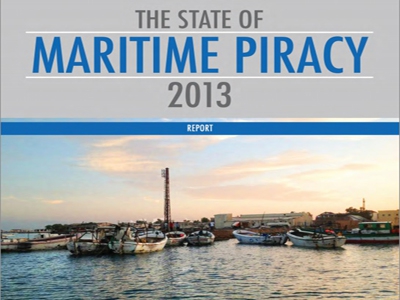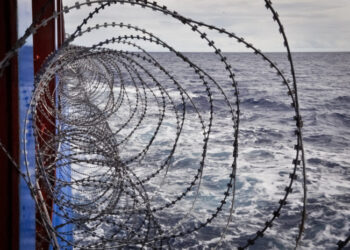Somali piracy has fallen nearly 50% to $3.2 Billion
Oceans Beyond Piracy (OBP), a project of OneEarth Future Foundation, is launching the fourth installment of its annual reportsdetailing the economic and human costs of African maritime piracy.
The study titled”The State of Maritime Piracy 2013″ examines the costs incurred as a result of piracyoccurring off the coast of Somalia, as well as in the Gulf of Guinea.
The study finds that attacks by Somali pirates are increasingly rare, and that, atbetween $3 billion to 3.2 billion, the overall economic costs of Somali piracy are downalmost 50 percent from 2012. However, at least 50 hostages remain in captivity, heldon average for nearly three years under deplorable conditions.
Regarding Africa’s West Coast, this report is the first comprehensive attempt byany organization to quantify the total economic cost of maritime piracy in that region.
Piracy in the Gulf of Guinea remained a significant danger in 2013, says the report, withlevels perpetuated by a lack of open reporting and a lack of coordinated effort amongstakeholders.
The media are invited to attend the report’s launch, due to start at 9:00am onThursday 8th May at the Army & Navy Club (‘The Rag’), 36 Pall Mall, London, SW1Y 5JN.The event will include a panel discussion of counter-piracy experts, moderated by OBPSenior Fellow, Admiral Sir James Burnell-Nugent. The panel will include JensVestergaard Madsen of OBP, Simon Church of the Maritime Security Centre, Horn ofAfrica, and Giles Noakes and Peter Sand of the international shipping association,BIMCO. The panel will present the main findings of the report as well as discuss themain piracy trends off the east and west coasts of Africa and take questions from theaudience.
“The efforts of the international community and the shipping industry haveconsiderably reduced the threat of Somali piracy,” says Jens Madsen, one of the report’sauthors. “But we have yet to achieve the goal of ‘Zero/Zero’ – zero vessels captured and zero hostages held,” he adds.
The study finds that while the combined economic costsof suppressing Somali piracy are markedly down, there has only been a slight increase inthe investment in long-term solutions ashore.
Research also shows that the shippingindustry increasingly relies on individualized risk mitigation, observed in the decreaseduse of some of the more expensive anti-piracy measures such as increased speed andre-routing. Shippers are also turning to smaller and less expensive teams of armedguards as the perceived risk of piracy is declining.
While attacks by Somali pirates have declined sharply, with no large vesselstaken in 2013, there are still, however, at least 50 hostages in captivity, who have beenheld on average for nearly three years under deplorable conditions.
At the same time,regional and local seafarers and fishermen in the region remain at high risk as piratescontinue to target locally operated vessels to facilitate larger attacks. Turning to maritime piracy off Africa’s west coast, the study finds that a criticallack of reporting on both the piracy and maritime crime here makes analysis difficult.
“Piracy in the Gulf of Guinea is fundamentally different to that taking place in the IndianOcean,” says Mr. Madsen. “We observe not only a high degree of violence in theattacks in this region, but also the lack of a mutually trusted reporting architecture andthe constantly evolving tactics of West African piracy makes it extremely difficult toisolate it from other elements of organized maritime crime.”
The report notes it is generally agreed the solution to piracy ultimately lies inbuilding up capacity onshore, but it stresses that relatively little investment has beenmade towards sustainable solutions.
“While I am encouraged that more money is beingspent on longer-term solutions ashore, these still only represent the equivalent of 1percent of the total annual cost of the piracy,” says Marcel Arsenault, Chairman of OneEarth Future Foundation. “Until we have more economic opportunity and bettergovernance ashore, we risk piracy returning to previous levels as soon as the navies andguards have gone home.”
|
More details may be found by reading Oceans Beyond Piracy Report – The State of Maritime Piracy 2013































































